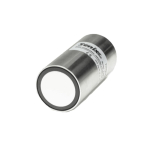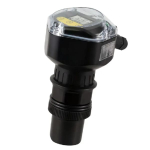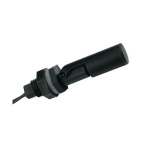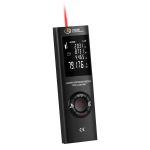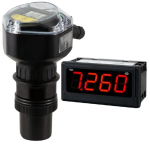Ultrasonic Sensors
Ultrasonic sensors are indispensable tools for precise measurement and detection applications across various industries. These sensors utilize ultrasonic waves to detect objects' presence, distance, or level, making them ideal for tasks requiring non-contact measurement. The technology behind ultrasonic sensors is based on emitting sound waves at a frequency higher than human hearing and then measuring the time it takes for the waves to bounce back after hitting an object. This time-of-flight measurement allows for highly accurate readings.
Ultrasonic sensors are widely used in manufacturing, automotive, agriculture, and many other fields. They are particularly valued for their ability to operate in harsh environments, including areas with dust, moisture, and varying temperatures. The versatility and reliability of ultrasonic sensors make them a crucial component in modern automation and monitoring systems.
Distance Sensors
An ultrasonic distance sensor is a type of ultrasonic sensor specifically designed to measure the distance between the sensor and an object. These sensors emit ultrasonic pulses and measure the time it takes for the echoes to return. The time the sound wave takes to travel to the object and back is directly proportional to the distance between the sensor and the object.
Distance sensors are commonly used in applications where precise distance measurement is critical. For instance, in industrial automation, they monitor the position of moving parts, ensuring safety and efficiency. In robotics, these sensors help robots navigate their environment by providing accurate distance measurements to avoid obstacles.
One key advantage of ultrasonic distance sensors is their ability to provide accurate measurements regardless of the object's color, transparency, or surface texture. This makes them superior to optical sensors in many situations. Additionally, they can operate effectively in environments with high levels of dust or moisture, where other types of sensors might fail.
Ultrasonic Level Sensors
Ultrasonic level sensor devices are specifically designed to measure the level of materials within a container, whether liquids or solids. These sensors work by emitting ultrasonic waves toward the material's surface and measuring the time it takes for the waves to return. The time-of-flight data is then used to calculate the material level in the container.
Level sensors are crucial in chemical processing, water treatment, food and beverage production, and pharmaceuticals. They ensure accurate monitoring of material levels in tanks, silos, and other storage units, which is essential for maintaining optimal production processes and preventing overflows or shortages..
Ultrasonic level sensors are highly reliable and can operate in various conditions. They are unaffected by the properties of the material being measured, such as viscosity, density, or dielectric properties, which can influence the accuracy of other types of level sensors. Additionally, they can provide continuous level measurement, offering real-time data crucial for process control and inventory management.
Ultrasonic Distance Sensors
Ultrasonic distance sensor devices are versatile tools used in various applications requiring non-contact distance measurement. These sensors are similar to the distance sensors mentioned earlier but are designed to provide highly accurate measurements over longer distances. They are commonly used in applications such as vehicle detection, security systems, and automation processes.
In vehicle detection, ultrasonic distance sensors monitor the presence and movement of vehicles in parking lots, drive-thrus, and toll booths. These sensors provide reliable data that can be used to automate gates, manage traffic flow, and enhance security. In security systems, they can detect intrusions or monitor perimeters, providing an additional layer of protection.
One of the significant benefits of ultrasonic distance sensors is their ability to operate in challenging environments. They can function effectively in high dust, humidity, or temperature variations, making them suitable for outdoor and industrial applications. Their non-contact nature also ensures they do not wear out or require frequent maintenance, an advantage over mechanical sensors.
Comparison Table
Features | Megatop Distance Sensor | Megatop Level Sensor | Competitor Ultrasonic Sensors |
Measurement Range | Up to 10 meters | Up to 5 meters | Up to 8 meters |
Accuracy | ±1 mm | ±2 mm | ±3 mm |
Operating Conditions | -20°C to 70°C | -10°C to 60°C | 0°C to 50°C |
Environmental Resistance | High | High | Moderate |
Connectivity | Wireless available | Wired/Wireless | Wired |
Maintenance | Low | Low | Moderate |
Price | Competitive | Competitive | Variable |
Buy ultrasonic sensor on Megatop
Enhance your measurement and detection capabilities with the advanced ultrasonic sensors from Megatop. Whether you need a distance sensor ultrasonic for precise distance measurement or a sensor level ultrasonic for accurate material level monitoring, Megatop has the perfect solution for you. Explore our range of ultrasonic sensors for sale and experience the difference in quality and performance. Contact us today to learn more and place your order. Your satisfaction is our priority, and we are here to support you every step of the way.


